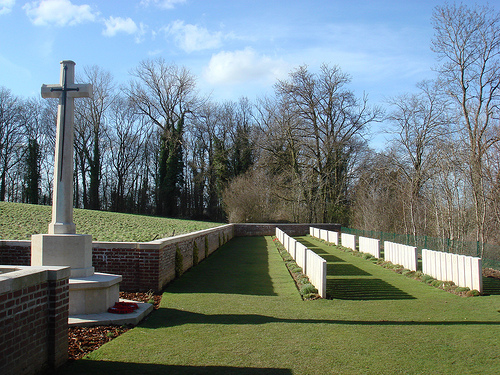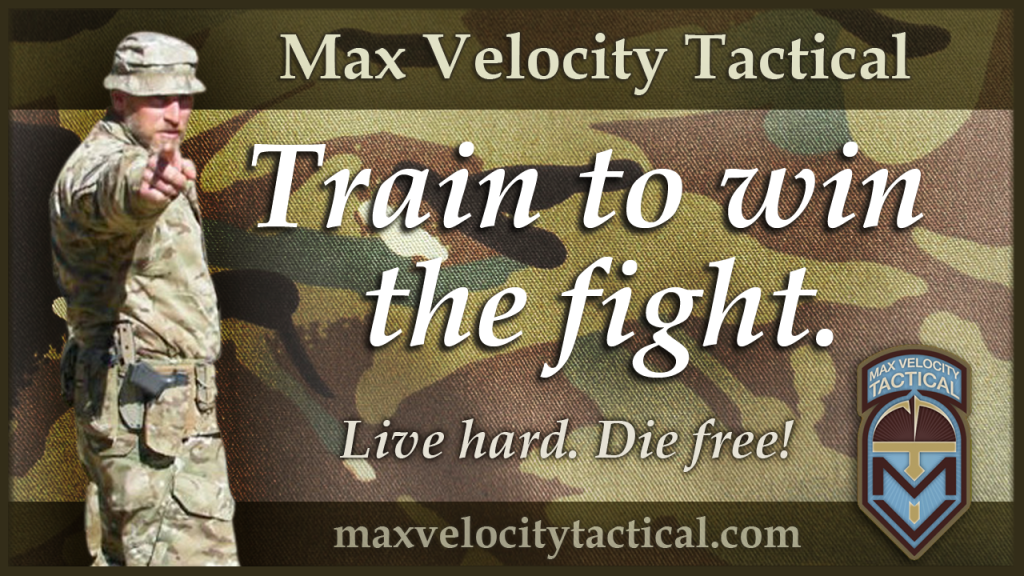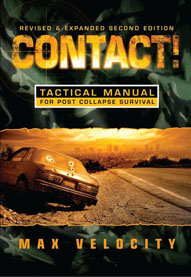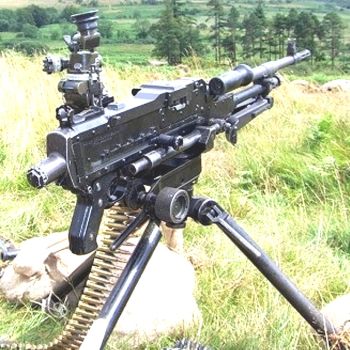Lee Sends: Old School vs. GWOT: Comparison + My Comment
Lee wrote this on the FORUM HERE:
This is being written as an adjunct to Max’s blog post,
MVT Tactical Training: Perspective
First a disclaimer, this is being written in reference to the average rifleman, the everyday combat grunt. The observations herein do not include any specialized or advanced unit such as sniper teams, recon platoons, SF etc. etc. etc. It is the everyday basic U.S. grunt. That means Army and Marines. (I swear if I hear another Airforce Security Forces shmuck utter the word infantry…)
I served nearly 4 years as a basic rifleman before moving on to bigger missions with smaller units. One of the things that I have noticed is a severe difference in the training that I received, as opposed to older family members that served in the infantry during previous wars.
As a child, I was exposed to (in some cases “taught”) the experiences of family members who served in WWII, Korea, and Vietnam, and the Gulf War. Every one of them as infantry of some sort. (Two rifleman, a mortarman, and a machinegunner). Unlike many of the fighting men of those generations, these family members believed it was important to pass the true stories on to the next generation so that mistakes would not be repeated. I was the beneficiary of that rather unique thought process amongst the older veterans.
After completing Marine School of Infantry (SOI) in 2002, I noticed a huge difference between the training that all these other Infantrymen received, and what I got. How were they different?
WWII and Korea had a heavy, heavy focus on long range marksmanship. It relied on rather large units (compared to the wars of today) and was very centrally controlled. Field craft was also very good, but this seemed to be more the result of a more rural society bringing in their civilian know how to the military than the training itself. However, good field craft was highly institutionalized and encouraged.
In Vietnam, we saw Marksmanship take a huge hit. The jungle warfare found in the majority of the country led to the U.S. military adopting a “spray and pray” tactic everytime contact was made. This, more than anything led to the adoption of the 5.56 over the 7.62×51 round. Simple carrying capacity. Field craft remained decent, although with the large amount of unmotivated conscripts, it seems this is where field craft began to fall to the wayside also. WWII had it’s draftees too, but it was a different animal completely.
The GWOT however we saw some extreme changes. Long range marksmanship is all but forgotten. Perhaps not totally in the USMC where recruits were still qualifying at 500m with iron sights at least up until 2012. But then again in SOI, it is all but forgotten in favor of close quarters marksmanship. The close quarters marksmanship has led to outstandingly improved weapon manipulation over the old school. But this loss of long range marksmanship however has very likely cost lives in Afghanistan where most SAF fire initiated by the enemy was in the neighborhood of 400m away…
Simple packing of a ruck and long range foot patrolling has fallen by the wayside. Troops are largely vehicle mobile in the GWOT, and basic field craft is all but non-existent. I see this happening for two reasons. 1) An increasingly urban U.S. population that sees a significant loss in hunting participation on a YEARLY basis and 2) Atrocious field craft training for the average Grunt, which is deemed unnecessary anyway since the GWOT is an “urban” fight. (Which is complete bullshit by the way…)
Small unit tactics has become a premium however. Only in the GWOT have we seen such large numbers of Grunt squads (9 to 13 troops) operating independently and at times completely unsupported. This has also led into an increase in the decentralization of command. With such small units operating without direct control or supervision by higher command. The “strategic corporal” concept comes to mind. Never before had so much command responsibility and heavy decision making rested on a non-commissioned officer in the infantry. Sergeants and Corporals are very decisive, aggressive and exercise far more initiative today than ever before.
At MVT we have noticed what works and what doesn’t in combat. Who did shit better? The old school guys or these new GWOT kids? The truth as demonstrated in combat is that the “best” is found in a combination of both worlds.
The Old School
Field Craft (Forage, camouflage, entrenchment, survival skills etc.)
Long range and intermediate range Marksmanship
Long range foot patrolling
Company and platoon sized operations
The GWOT
Weapon Manipulation
Close quarters Tactics
Small Unit Tactics
Individual Initiative (not reliant on orders from higher, tactical and strategic thinkers)
Mobility Tactics (vehicles, perhaps not all that applicable for most tactical civilians…)
Combat Trauma Care
Perhaps this is not an all inclusive list. But it does give one some idea of the differences in the training coming from someone with an extensive family history of infantry service who served in the GWOT.
In forum comments, Lee also adds a very important factor that has been improved in recent times: Medical (i.e. TC3 etc.)
How does this relate to training?
As commenters have said on the forum, this is an excellent analysis and it also shows something that we have been doing at MVT – combining the best approaches, although so far I have not summarized it as well as Lee did above. Somewhere between the square range ‘tacticoolers’ and the ‘FM readers’ of the black boot army era, is what we have been doing at MVT, and what I have been attempting to describe when I tell people what my plan was when writing ‘Contact‘ and what we bring at MVT training.
Where do the standing, close range, square range adherents go wrong? They are focusing on limited weapons manipulation and not taking account of Small Unit Tactics (SUT), fieldcraft, cover etc. They have taken (or instructors are only teaching) the improvements to weapons manipulation training that we see with the GWOT, and close quarters combat, and simply stuck with that.
Where do the ‘Old School Only’ guys go wrong? They are not taking account of the close combat and weapons manipulation improvements from the recent GWOT.
I have been saying this for a long time, only not as well as the post above. Well done Lee.
If you look at the MVT class list of realistic live fire training, you will see we have this covered:
Civilian Close Combat: square range weapons manipulation, including CQB, react to contact drills, and also use of/firing from cover, barricades, basic buddy pair fire and movement. Everything you need at a fundamental level to fight in and around your suburban neighborhood.
Combat Team Tactics: Individual weapons manipulation and react to contact drills, beginning with day 1 on the square range with combat rifle, then moving to two days on the tactical ranges for fire and movement and break contact up to team level, including a finale guided squad attack.
Combat Patrol: SUT at team and squad level covering the essentials of patrol operations: patrol base, movement, recce patrol, ambush patrol, security patrolling and raid. This is both a low tech and high tech class, aimed at those with or without night vision equipment, and allowing for both approaches.
Night Firing: NODF covers use of modern NVGs/Lasers and includes live firing drills on the square rage followed by a controlled night raid on an objective (scenario based).
Land Navigation: old school navigation techniques (orienteering based) covering low tech navigation. Take the patrol to the right place!
I have a somewhat nuanced comment on an element of the above post, however. It is concerning SUT and the GWOT. Lee states that a strength of the Old School is Company and platoon sized operations. Agreed. He also lists a strength of the GWOT as Small Unit Tactics. Somewhat disagree, with a nuance. Remember, the premise of Lees article is that we are dealing with ‘ordinary units’ not anything ‘special.’
Why do I have a nuanced disagreement with the Small Unit Tactics statement?
It is my opinion that although we have seen development of independent command down to lower levels as part of the GWOT, and we have the rise of what could be called the ‘strategic squad leader,’ there are some issues with this. I think the art of SUT has somewhat been lost during the GWOT, possibly due to FOB based operations and a lot of vehicle based operations. Also, due to the availability of close air support / support fires much of the time a lone squad / detached element under fire will not conduct SUT, but will ‘call for fire.’ And why not, of course? The point is not to conduct SUT for the sake of it. The point is to win.
So although there may be increased responsibility down to lower levels of command, I think that does not necessarily come with greater ability to conduct SUT. I have not been impressed by what I have seen of SUT ability across the ‘normal’ or ‘ordinary’ US Military. And of course, even SOF units may have lost this to some extent as part of the GWOT. By way of anecdotal example, Ranger school is an excellent leadership school using SUT as a vehicle for leadership training. However, I have been the recipient of comments by Rangers serving in the Ranger Battalions that Ranger School is increasingly irrelevant and after it “guys have to be retrained at Battalion in SOPs” (remember that new Rangers do not do Ranger School, that will come later, they will come through Ranger selection). Although I disagree that Ranger School is now irrelevant, because I am champion of the sort of SUT taught at Ranger School, I understand why this comment was made: the role of the Ranger Battalions throughout the GWOT has been as an SOF raid force conducting an overwhelming amount of CQB based short term operations, i.e. kill or capture, usually into a building or compound objective, with high mission turn around and perhaps multiple objectives per night. This is the modern close combat / CQB/ weapons manipulation / night vision high speed stuff referred to in Lee’s post.
Another thing we need to consider is that although there may be more independently operating smaller elements, such as squad level, in the GWOT, we also have massive advances in communication and surveillance technology. Combined with rules of engagement, what you have increasingly in the GWOT is micro-management from back at the TOC, at often obscenely higher levels of command. So although that squad may be out on its own, it may be having its strings jerked about by higher. This is a corruption and failure of the concept of mission-command.
I also think that because part of the training towards good SUT in platoon and company operations is the individual, team and squad training that is the building blocks; and thus, before you do platoon attacks, you do squad attacks. True, in ‘old school’ a squad leader may not have been given as much independence as a GWOT squad leader may be given, and thus would perhaps have less chance to utilize these skills. Also, part of this is that when you are involved in bigger wars, you tend to act as bigger units, as platoons or companies, with the company really being the smallest independent element in a large scale war. In a company in the attack, there is less freedom of movement for individual squads. Such is true when you examine large attacks in the Second World War, for example. These often took the form of advances over several kilometers, as part of a set piece objective, with a large volume of indirect and direct fire going in both directions, and the infantry force ‘winning’ being the one that did (or alternatively didn’t) make it onto the objective. I summarize and generalize, but I hope you see my point.
I am currently reading an excellent book: ‘With the Jocks‘ by Peter White. It is a moving account of his part in the war as a platoon commander with a Scottish Regiment from the Fall of 1944 to the end of the war. He loses his platoon in its entirety throughout this time, to wounds and death. True, there is much of the set-piece battle and limited freedom of maneuver at platoon level in the book; howling industrial warfare firestorms of artillery, mortar and 88mm fire etc. But even evident in the book is SUT. Here is small excerpt to illustrate this:
….sent Sgt Cowie out on a recce patrol to see if the house was clear of enemy. He was to take a section of men with him, and one of the only two 38 sets then still working to keep in touch. He was to work around in a dog’s leg, coming in to the house at right angles from us so that if he ran into trouble we could give him covering fire. (90 degree angle seem familiar to CTT/CP alumni?) At the angle of the leg of his route stood two small farms which he would have to clear too. Getting to the farms involved a lengthy stalk along the side of a water filled ditch called Ekklesen Beek. He wisely chose to keep off the track for fear of more mines, and reported the farms clear by radio as he passed them. As the distant figures of the patrol approached the house, we trained our weapons on it, and watched intently the jerky movements of the Jocks working their way towards it in bounds. (bounding overwatch anyone?) They disappeared inside with no sounds of firing coming back…….(well, that was high threat room entry and clearance, but they could probably have used contemporary tips from the GWOT on best practice there….)
One of the things that I believe is inaccurate are people’s impressions, often gained primarily from Hollywood and not historical study, of the tactical ability and reality of some of these battles in WW1 and WW2. They just used to walk towards the enemy in the trenches of WW1 right? Yes, that did happen, but many times it didn’t, in particular from some of the Regular Army battalions with training and experience fighting there. Often, bounding of platoons in individual sections was used to try and cross no-mans land. Now, that still didn’t always work, perhaps if the artillery barrage was not effectively suppressing the enemy on the other side of no-mans land. But often it was for reasons that you may not be aware of.
I have a historical anecdote in my mind that I know is not exactly accurate, but it is something like this: during a WW1 trench attack, a platoon was moving forwards, bounding by sections. The platoon commander looked to his rear to call the next bound, and saw all his men laying down. He was about to swear at them as ‘cowardly bastards’ when his platoon sergeant, wounded, in a final effort looked up and said something like: “No Sir, they are all dead.” The attack was over, despite use of bounds.
Because it’s not the Hollywood image of the German machine gun on the trench parapet 100 yards away that is the threat. Back then, the art of machine-gunnery was alive. There are numerous instances in WW1 of Battalions, knowing that if a machine-gun on the corner of a wood was not destroyed, knowing that they would be wiped out, or at least suffer heavily, in an attack. So, it’s easy to wipe out a machine-gun, right? Just plaster it with artillery fire till it goes away? However, particularly in the chalk areas (Somme battlefield) of the Western Front, the Germans would tunnel in and dig bunkers underground. They would then open up a small foot wide aperture in the front of the chalk/bunker. This machine gun would not be firing to the front, but it would be a sled-mounted water-cooled MG-08 firing at the cyclic rate (500 rounds per minute) in enfilade across the line of no-mans land 1000 yards away or greater. The machine-gun that is killing you is not even in the same grid square as you.
Ask the men of the Devonshire Regiment, which was almost wiped out on the first day of the Somme. 163 of the dead were retrieved from where they fell in no-mans land and buried in the trench from which they had ‘gone over the top.’ The famous saying is: “The Devonshire’s held this trench. They hold it still.”
“The Devonshire’s held this trench. They hold it still.”
So, I digress. My point is that SUT was not absent in these wars. There was more of it than you may realize. Also, the now famous German ‘Stormtrooper tactics’ which they apparently invented in 1917 to break the stalemate on the Western Front, consisting of SUT based fire & movement, short rushes etc, came about because they got their hands on the British Army Infantry Manual of the time and trained in it.
But it’s a hard thing to nail down. We can talk about ‘Old School’ and ‘GWOT’ but there is such a vast difference of experience across the GWOT. It can be anything from being a road warrior to fighting at company-, platoon-, section (squad)-level old school infantry operations in places such as the green zone of Helmand, or more desert based such as manning the compounds, and patrolling from them, in Garmsir to the south. or the wadi- and mountain- desert- based locations such as Kajaki and Musa Qala. And these can get down and dirty just like any war of the past, and are more than likely not getting micro-managed at close range in the jungle-like vegetation of the green zone, and may not always be resolved with a ‘call for fire.’
And now for another slight digression from the main topic: as a former anti-tank officer in 2 PARA, I was aware of current British army machine-gunnery. Being an anti-tank officer in the (Fire) Support Company made you the Battalion Commander’s anti-armor adviser. Now, in deployment on current day operations that normally meant command of ‘MSGs’ (maneuver support groups) which would combine vehicles carrying anti-tank weaponry with others carrying machine-guns. This was a joint tasking where the MSGs were formed from elements of the anti-tank and machine-gun platoons. However, I was in conversation with Chris at a class and I mentioned the art of ‘sustained fire’ (SF) machine gunnery. This is where a GPMG (i.e. 240) is mounted on a tripod (not the light tripod with T&E used by the US Army) and laid and fired on pre-registered targets using a C2 sight and aiming post just like an 81mm mortar. This works out to 1800 meters and there is also map-predicted fire out to 2500-3000 meters. The gun is not fired in the shoulder, in fact it is just fired with the finger and thumb, and the rounds impact a cigar shaped ‘beaten zone’ a little like my example of the German MG-08 (although the GPMG is not water cooled, and barrels have to be changed out).
GPMG SF Role with c2 sight: aiming post not shown. Note replacement of the machine-gun butt with butt plate.
Chris was all over me about this. I thought he was jerking my chain at first, but apparently this is not taught in the US Army, at least widely. I am sure 18B SF weapons guys must know about this? Anyone? Chris was adamant how this employment of the 240 in a defensive fire (DF) role could really have helped some of these poorly sited (low ground) FOB/COP locations in Afghanistan.
As a one-time anti-tank officer, what was very interesting was the ‘TESEX’ which was run on Salisbury Plain training area. This utilized MILES gear and was a Battalion level FTX. They have an actual armored Battlegroup that is designated as the OPFOR;it is the job for that Battlegroup for a whole 2 year posting. As an anti-tank officer, as part of an unarmored light infantry Parachute Battalion, this allows you to do your actual job, as in if the Soviets were coming through the Fulda gap (Ukraine anyone?) It is pure maneuver warfare, with the OPFOR doing what they want. As one phase of this operation we parachuted in and secured a village, digging in around it. The use of MILES gear is as realistic as these exercises can get. At the end of the operation, I recall our two forward companies (dug in), had been destroyed and the enemy was through my anti-armor defenses (maybe I should have been better at my job?) We had notionally destroyed the bridge and the enemy armor was maneuvering with a bridging tank to put a bailey bridge across the defile. I remember running to the bridge with the support company commander and some remaining soldiers carrying LAW missiles (like the AT4). As one of my platoon shouldered the LAW, he was ‘shot’ (started bleeping). I managed to salvage the situation by then picking up the LAW and ‘destroying’ the bridging tank, thus preventing the enemy getting across. It is this sort of fighting that we are not currently focused on and which is not part of the GWOT experience. Unless we get back to this, once we finally manage to provoke Russia to war, we will have a hard time of it. Read that book ‘With the Jocks’ and consider the stories he relates of enemy massed artillery fire. That kind of capability, which the Russians have, would really ruin the Baskin Robbins counter back in the FOB DFAC. Oh, you won’t have a FOB, because you will be engaged in running maneuver warfare armored battles….ooops….Russian tanks just rolled through the MWR tent….
Max



